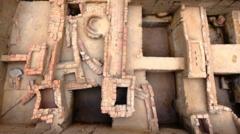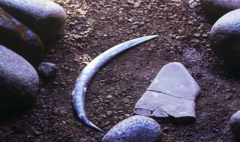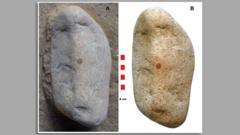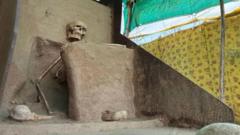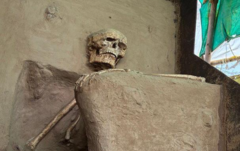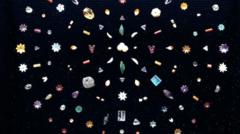The discovery of a carved runestone in a remote Canadian forest has prompted excitement among historians and archaeologists, suggesting new insights into pre-Columbian history in North America.
Ancient Runestone Discovered in Ontario: A Glimpse into North America's History

Ancient Runestone Discovered in Ontario: A Glimpse into North America's History
Archaeologists reveal significant findings from a 2015 discovery of a runestone in northern Ontario, asking for public assistance in decoding its mysteries.
The dense Ontario wilderness concealed a remarkable artifact until the unexpected fall of two trees in 2015 exposed it to the light of day. Beneath the soil, a stone engraved with 255 intriguing runes and an image of a boat lay undiscovered for years, sparking curiosity about its origins. Who was responsible for these carvings? What story is inscribed within them? To uncover these mysteries, researchers from various fields—including historians, archaeologists, and rune specialists—quickly assembled to analyze the findings.
The runestone’s discovery occurred on private property near Wawa, Ontario, upon the accidental unveiling triggered by the collapse of the trees. Initially raising the possibility of Viking influence—given that only one Viking settlement has been confirmed in North America, located in Newfoundland—researchers quickly dismissed this hypothesis. They also ruled out any association with the notoriously fabricated Kensington Runestone from Minnesota.
Kristel Zilmer, a noted runologist from the University of Oslo, remarked on the significance of the find, indicating that objects like this can reveal how knowledge and cultural practices may have traveled across regions and cultures. “This shows that unexpected finds can occur in places we might not suspect,” she noted.
Ryan Primrose, the archaeologist who investigated the Wawa site, expressed his astonishment at the find. “I never expected to encounter a runestone in my career,” he stated, illustrating the unexpected nature of archaeological discoveries that continue to shed light on ancient histories. Researchers are now seeking collaboration with the public and experts alike to unlock the secrets of the runestone, as its potential importance to North America’s past remains an open question.
The runestone’s discovery occurred on private property near Wawa, Ontario, upon the accidental unveiling triggered by the collapse of the trees. Initially raising the possibility of Viking influence—given that only one Viking settlement has been confirmed in North America, located in Newfoundland—researchers quickly dismissed this hypothesis. They also ruled out any association with the notoriously fabricated Kensington Runestone from Minnesota.
Kristel Zilmer, a noted runologist from the University of Oslo, remarked on the significance of the find, indicating that objects like this can reveal how knowledge and cultural practices may have traveled across regions and cultures. “This shows that unexpected finds can occur in places we might not suspect,” she noted.
Ryan Primrose, the archaeologist who investigated the Wawa site, expressed his astonishment at the find. “I never expected to encounter a runestone in my career,” he stated, illustrating the unexpected nature of archaeological discoveries that continue to shed light on ancient histories. Researchers are now seeking collaboration with the public and experts alike to unlock the secrets of the runestone, as its potential importance to North America’s past remains an open question.


